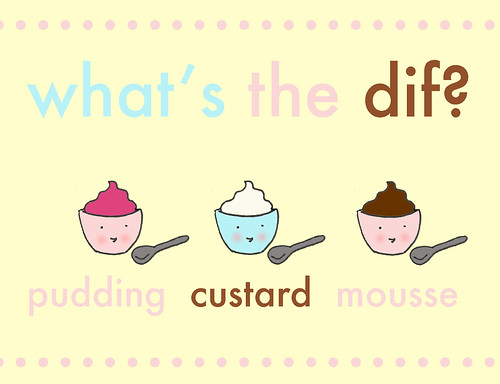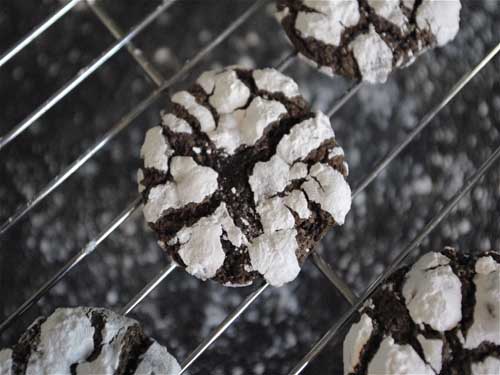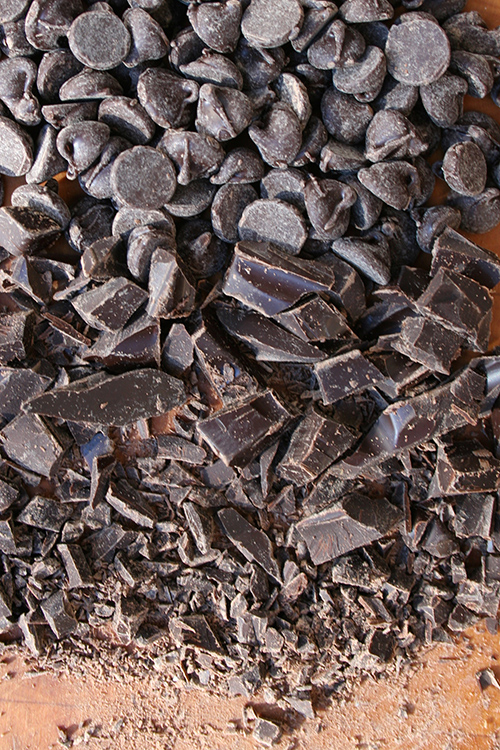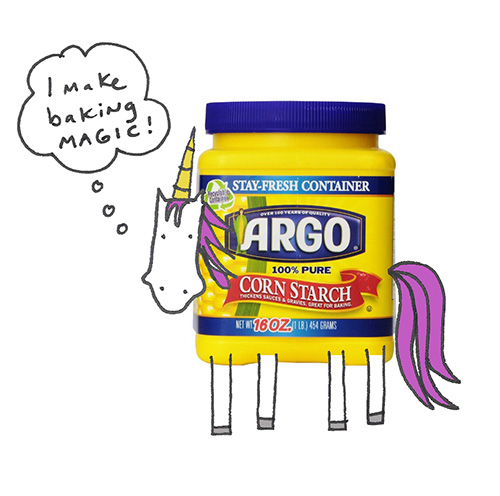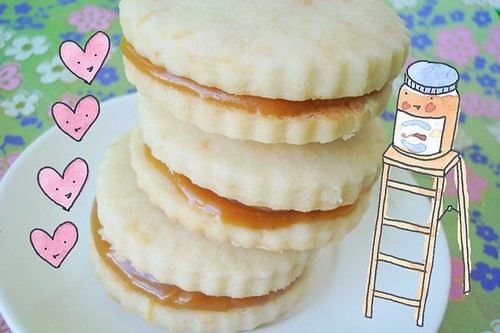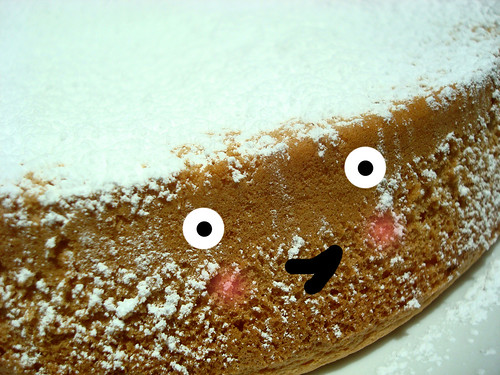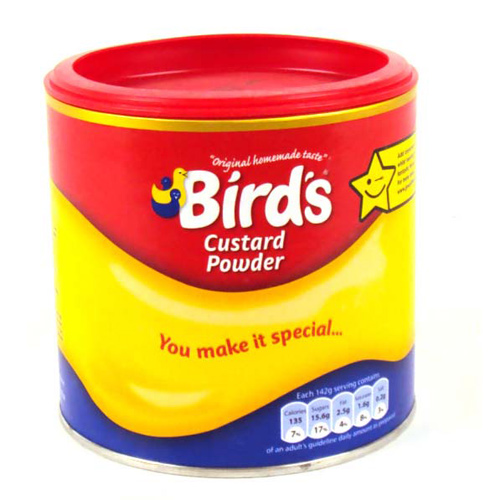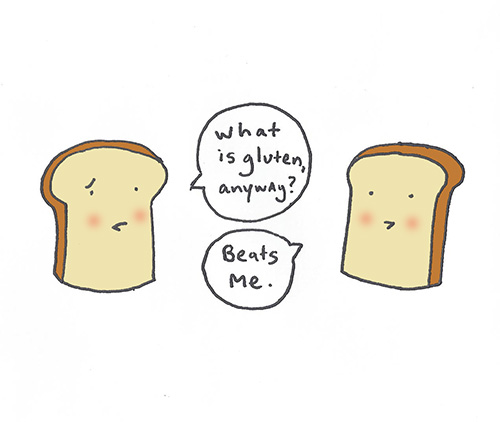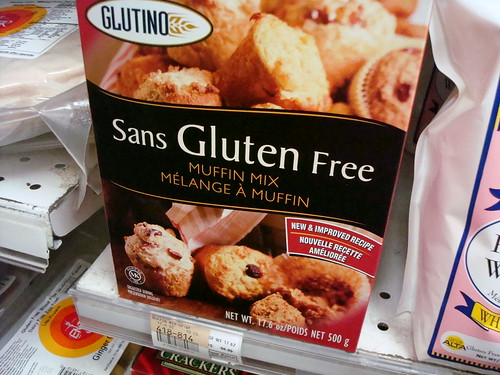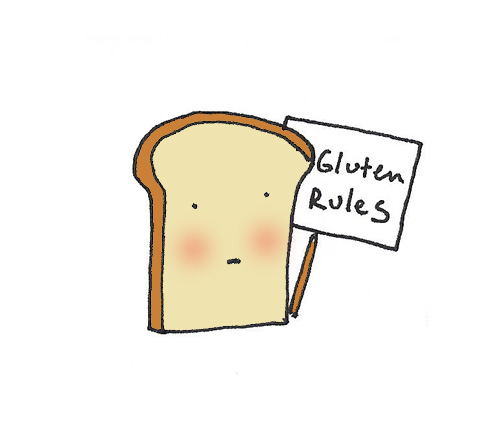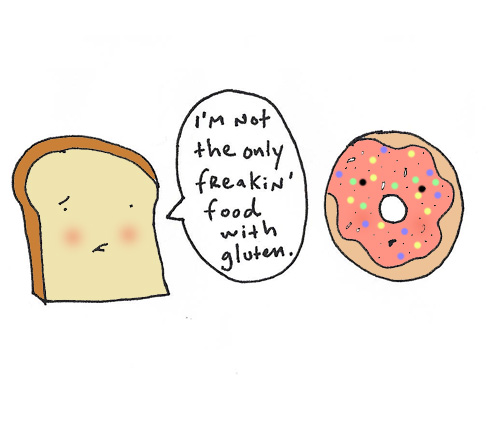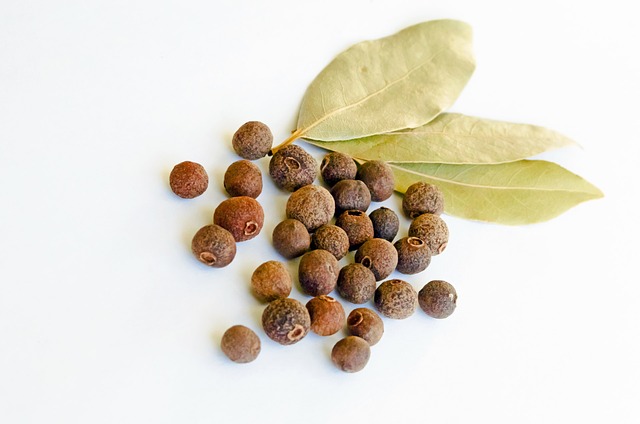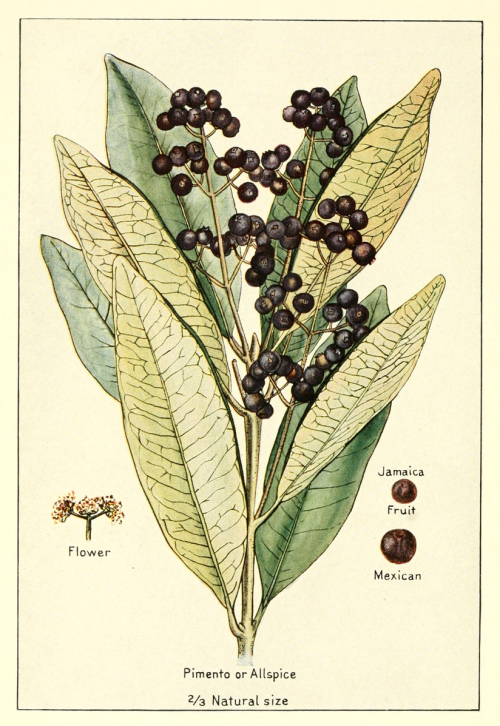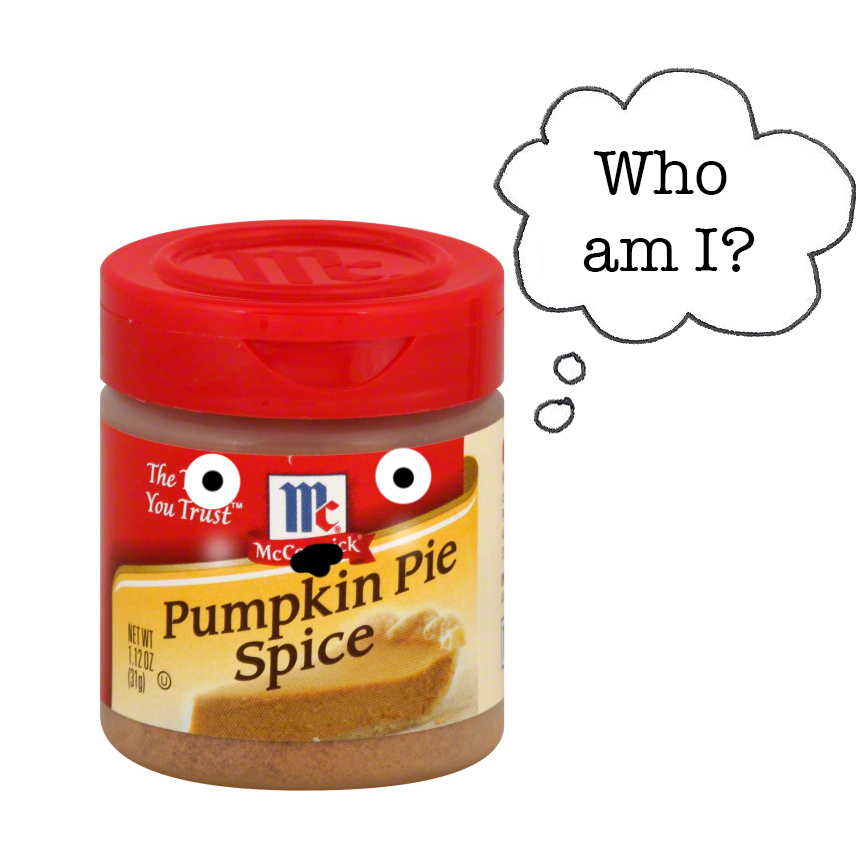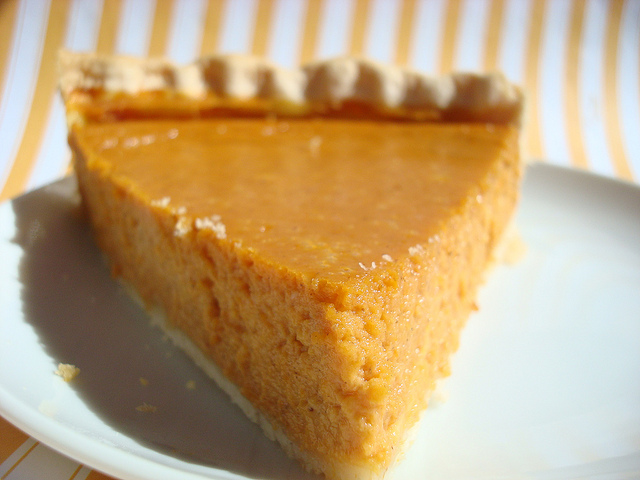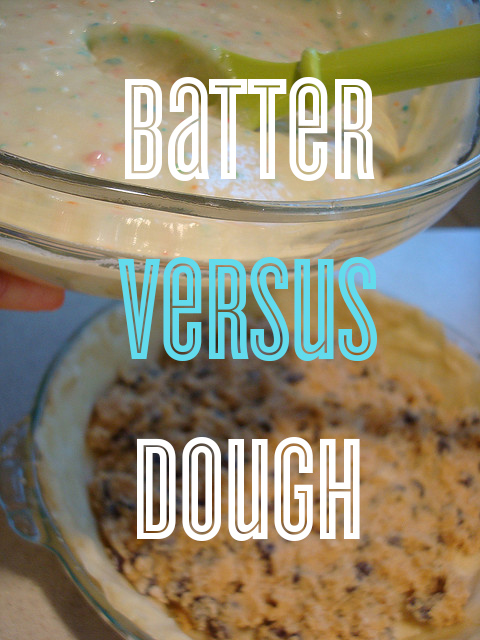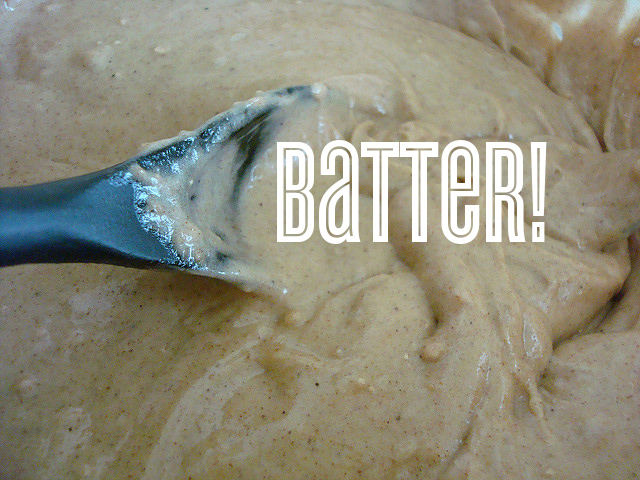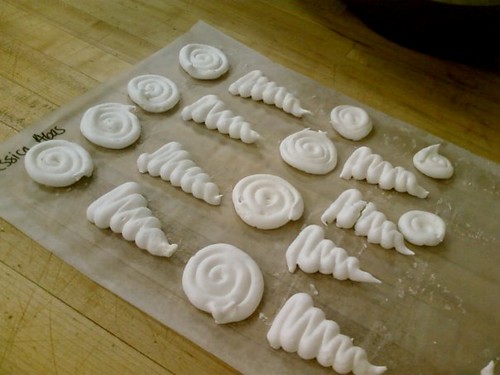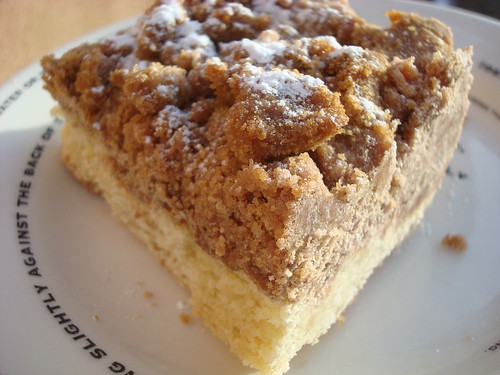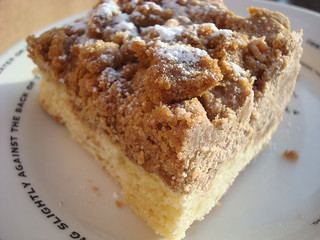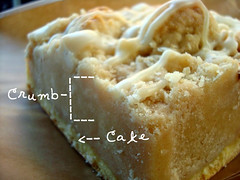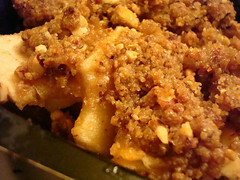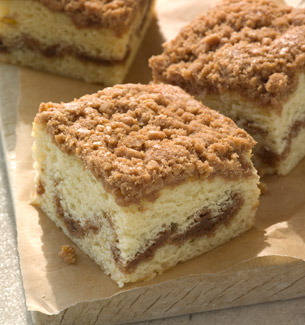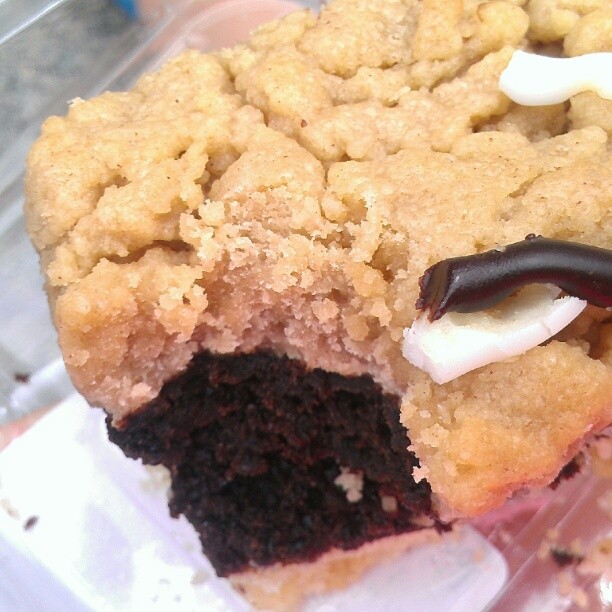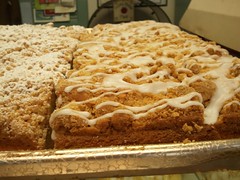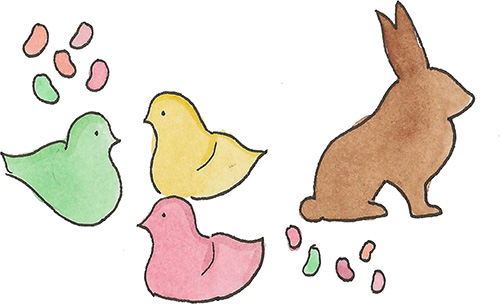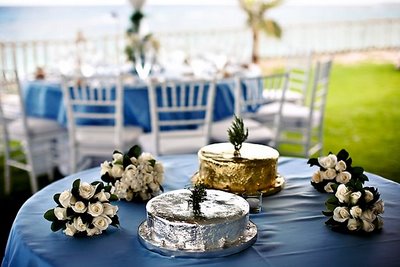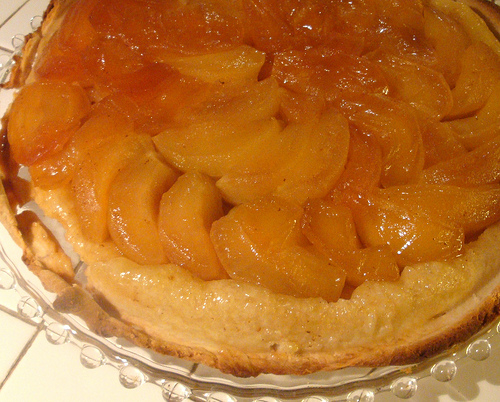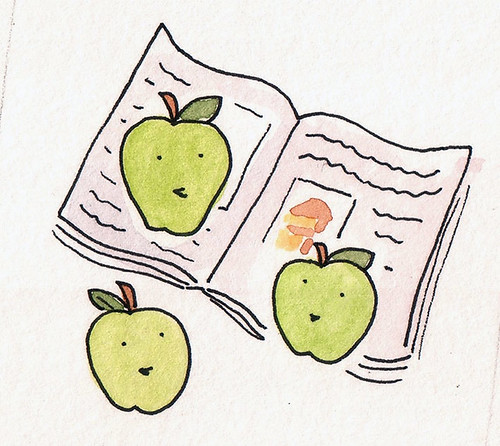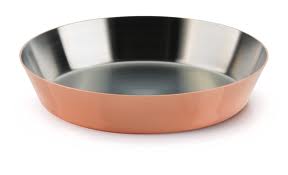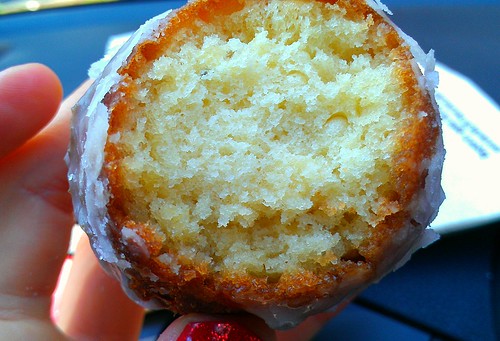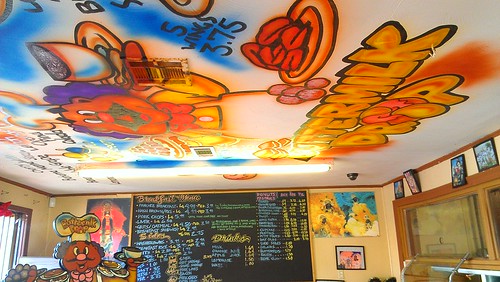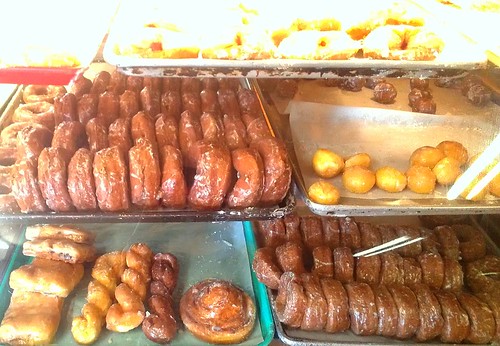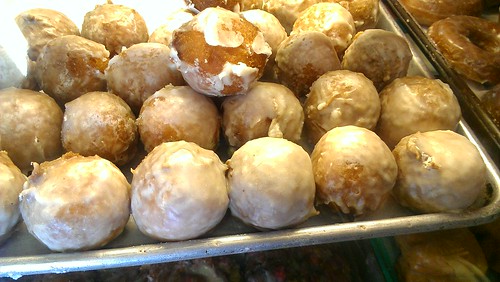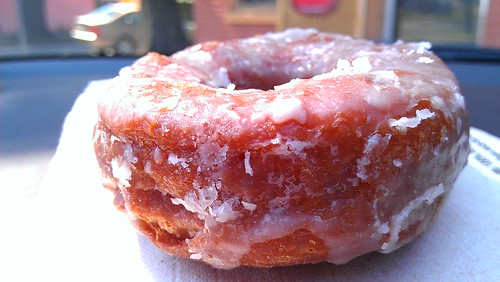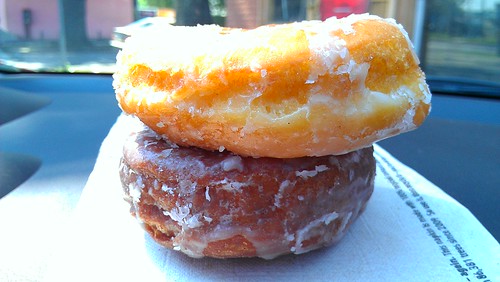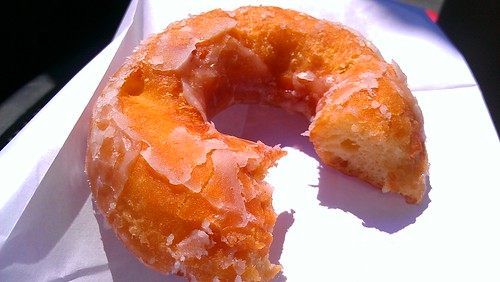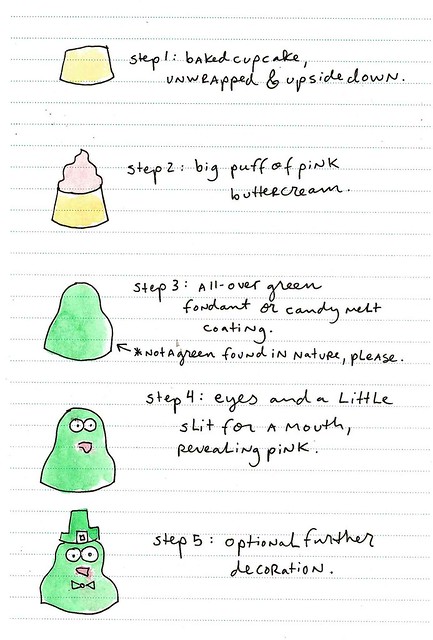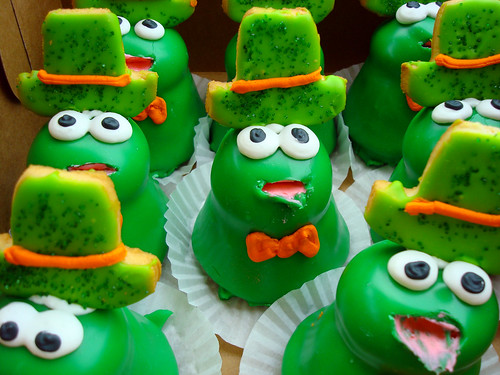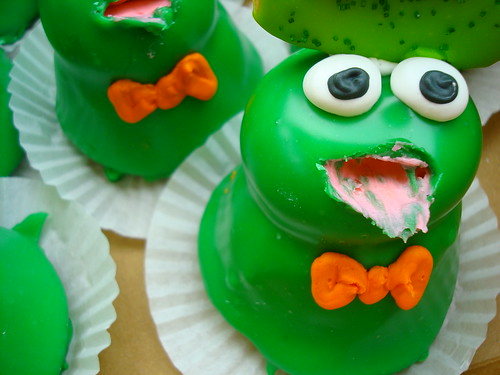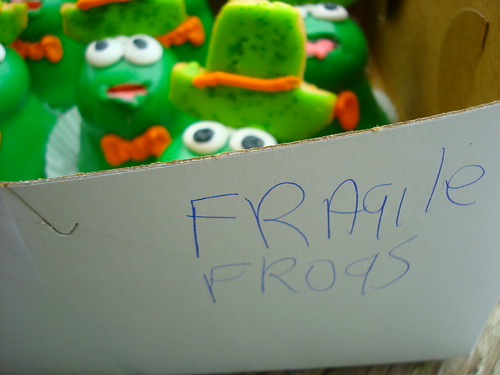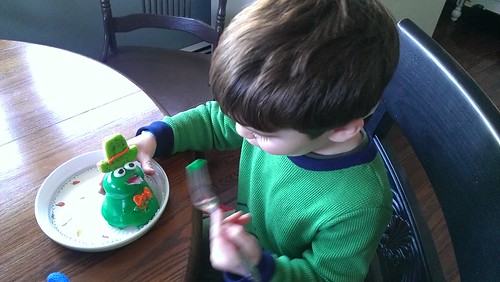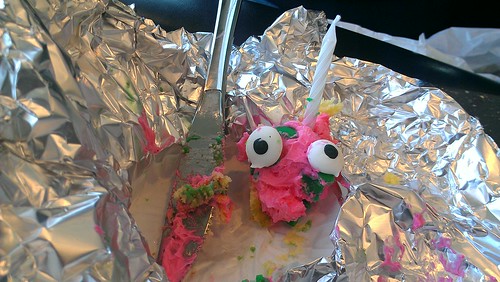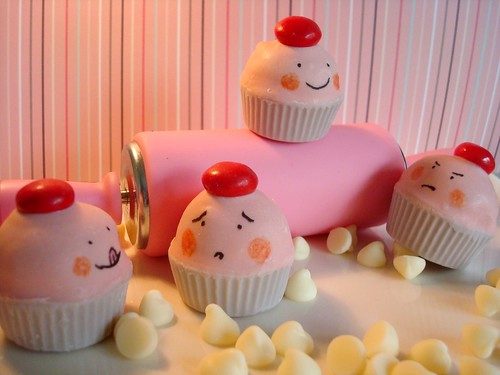
This month, CakeSpy (the website, not the author) celebrated its sixth birthday! It seemed like the right time to take stock of where I've been and where I'm going.
It was more than a little emotional for me to go through the archives and relive the CakeSpy adventure--starting the site, thinking of friends I've made, quitting my day job, opening a gallery, traveling the world on cake adventures, releasing two books...like, whoa! It is amazing to think what has happened in my life since I opened this little corner of internet real estate.
So why not come along with me for a stroll down memory lane and revisit the good (and very sweet) times we've had so far? Let's first go way, way back to 2007...
Early 2007: I was the product manager and art director at a refrigerator magnet company (it's true) called iPop. While I loved the people I worked with, I felt like I wanted to break off, do my own thing, have my own company. But what in the world would I do?
June 2007: After reading Purple Cow: Transform Your Business by Being Remarkable by Seth Godin (note: this would later come full circle, when I was mentioned in the updated version of this very book!), I was inspired to look at what I really loved in life, and to start doing it. So, I had a little sit-down with myself in the Olympic Sculpture Park in Seattle and thought "in an ideal world, what would my job include?". The answer came to me right away: writing, illustrating, and baked goods. Now, I had no idea how this could turn into any money, much less success, but I decided to start a blog while I figured it out. Blogs were what people were starting to do, right?
by Seth Godin (note: this would later come full circle, when I was mentioned in the updated version of this very book!), I was inspired to look at what I really loved in life, and to start doing it. So, I had a little sit-down with myself in the Olympic Sculpture Park in Seattle and thought "in an ideal world, what would my job include?". The answer came to me right away: writing, illustrating, and baked goods. Now, I had no idea how this could turn into any money, much less success, but I decided to start a blog while I figured it out. Blogs were what people were starting to do, right?
I decided I would write my blog kind of like DailyCandy, a website I was writing for at the time--but on my website, it would be all sweets. Every day (or close to it) I would try to present a sweet find, be it a bakery, service, recipe, or perhaps sweet artwork. And like DailyCandy it would be punctuated by illustrations--of a little cupcake I've been drawing for years.
I wanted a name that reflected me as a seeker of sweetness, but that wouldn't corner me into just one category. Something that would draw in possible readers who would wonder..."What's that?". It came to me after about a day: CakeSpy. I'd start my own dessert detective agency!
August 2007: On a fairly unremarkable day, I made my first posting. It was about a now-defunct (I think) Etsy seller who sold cupcakes baked in jars. I'd never witnessed such a thing at that point so I thought it was the coolest thing ever.
September 2007: I do my first ever interview, with Jennifer Shea of Trophy Cupcakes. It's still a favorite interview of mine. It also alerted me to how interesting the world of commercial baking can be.
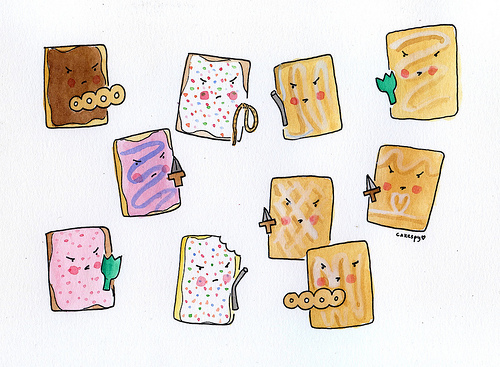 November 2007: I write about the history of the Pop-tart, which was one of my most popular posts to date (first time I realized more people than my immediate family were reading my site) and gets me fascinated about the secret lives of other baked goods.
November 2007: I write about the history of the Pop-tart, which was one of my most popular posts to date (first time I realized more people than my immediate family were reading my site) and gets me fascinated about the secret lives of other baked goods.
Also, this is the month I open my Etsy store, selling original artwork and notecards. I ultimately change to Big Cartel.
December 2007: My first experiment post: How (not) to Ship a Cupcake, goes my version of "viral"--I get several thousand hits. I really start to think I must be on to something, since up until this point basically just my mom and co-workers are reading my website.
January 2008: My next experiment post, and still a favorite: Rice Krispies treats made with all types of cereal.
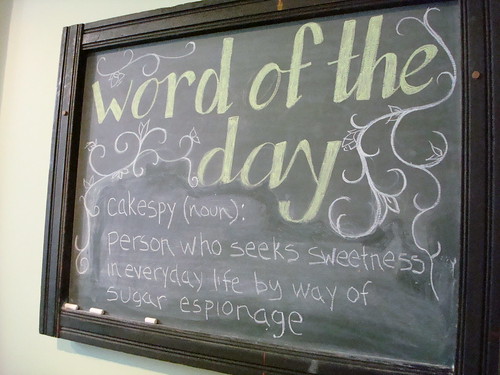
March 2008: I had an art opening in Tacoma, and for the first time was "Word of the day".
I begin contributing to Taste of Home Magazine, largely thanks to my friend Sandy Ploy.
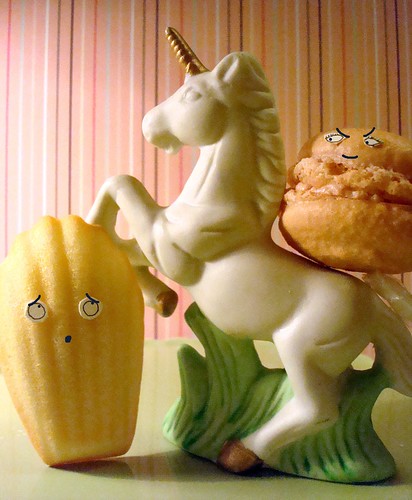
April 2008: A unicorn figurine prominently figures into the website for the first time, in a post about madeleines and macarons.
I quit my day job to pursue CakeSpy full time!
June 2008: I took a scooter ride in Queens and ate some cookies with the same name as my friend.
I chase a pie in Brooklyn which may or may not really exist.
July 2008: I was featured in an article about frosting shots.
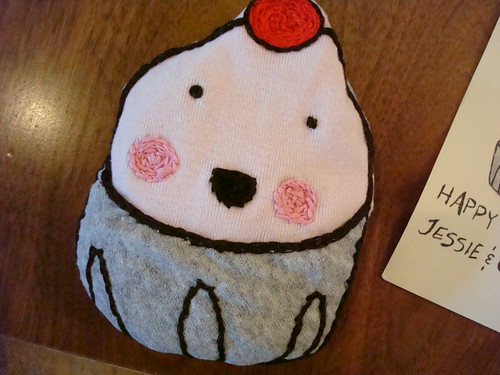
August 2008: CakeSpy turns 1 year old! Here's the post about the party.
I wrote a still-favorite post about Bonbon cookies.
CakeSpy begins contributing to Serious Eats! I went on to contribute for several years.
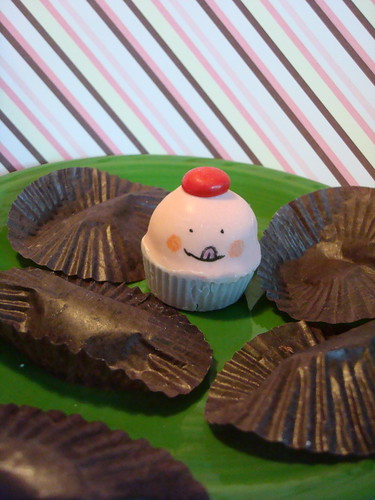
September 2008: Bakerella made cake pops that looked like Cuppie!
CakeSpy debuts holiday card designs.
October 2008: I license my artwork to a rubber stamp company.
I meet (and fall in love with) the owners of BAKED.
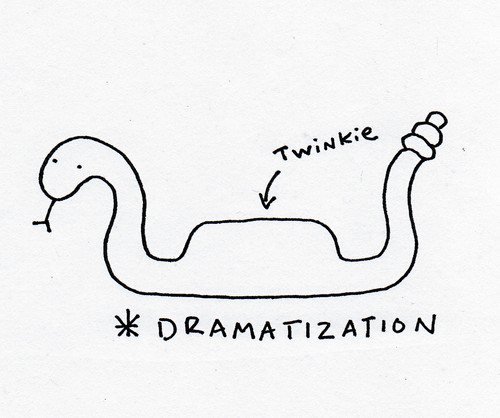
November 2008: 50 Ways to Kill a Twinkie.
December 2008: The best things I ate in 2008.
January 2009: My famous cupcake street art installation makes people's day sweeter!
February 2009: My artwork is used as part of a marriage proposal!
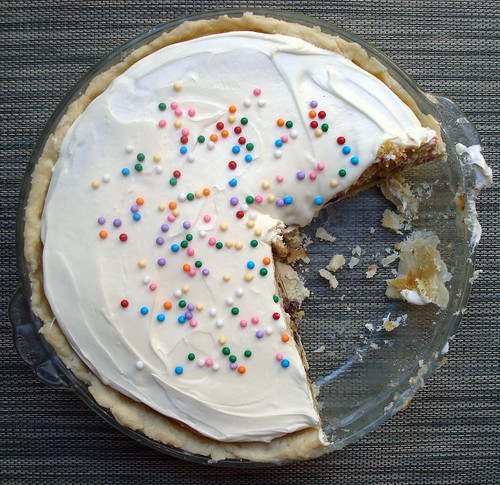
May 2009: My most popular recipe to date: Cookie Cake Pie.
August 2009: CakeSpy turns two! I celebrate by exploring the edi-mology (get it?) of the word cake.
November 2009: Important life skill: how to make marzipan turkeys.
December 2009: Best of 2009!
 February 2010: CakeSpy goes to Paris. I visited one bakery in each arondissement. Here's the roundup.
February 2010: CakeSpy goes to Paris. I visited one bakery in each arondissement. Here's the roundup.
March 2010: I did a mural in a bathroom in Minneapolis
CakeSpy goes retail! I purchased a gallery in Seattle and for the next two years, ran my own store. Wow!
Spring 2010: My friend Bakerella gets a book deal!
 June 2010: I made a very large cinnamon roll.
June 2010: I made a very large cinnamon roll.
August 2010: CakeSpy turns three!
CakeSpy featured on CNN!
October 2010: I had an amazing trip to California.
November 2010: I visited every bakery on Broadway in Manhattan, in one day.
December 2010: I sign a book deal for my first book. CakeSpy Presents Sweet Treats for a Sugar-Filled Life is in the works!
Also: Best of 2010!
January 2011: I ate Pumpple!
Ask a Spy: How do I become a Superstar Dessert Blogger?
February 2011: I entered (and later on won a prize--my socks in production!) the Sock it to Me Design a Sock contest.
March 2011: I am working on coloring book pages for Taste of Home magazine!
 I was featured on the cover of a magazine.
I was featured on the cover of a magazine.
April 2011: I was featured in a Brazilian newspaper.
May 2011: Did I mention I ate a whoopie pie in Maine for the first time?
June 2011: My book cover is finalized!
I visit the Wilton Headquarters in Illinois.
July 2011: I do a mural in a bathroom in Seattle.
 August 2011: CakeSpy turns four! I go to Nanaimo, home of one of my favorite sweets, to celebrate.
August 2011: CakeSpy turns four! I go to Nanaimo, home of one of my favorite sweets, to celebrate.
September 2011: I take an epic road trip to Chicago and eat pastries all along the way.
Duncan Hines invites me to the Emmy Awards!
 October 2011: MY FIRST BOOK COMES OUT!!!!!!!!!!!!!!!!!!!!!!!!!!!!!!!!!!!!!!!!!!!!!!!!!!! CakeSpy Presents Sweet Treats for a Sugar-Filled Life
October 2011: MY FIRST BOOK COMES OUT!!!!!!!!!!!!!!!!!!!!!!!!!!!!!!!!!!!!!!!!!!!!!!!!!!! CakeSpy Presents Sweet Treats for a Sugar-Filled Life !!!!!!!!!!!!!!!!
!!!!!!!!!!!!!!!!

For the party, New York Cupcakes made me the best batch of cupcakes...EVER!
Bakerella visited my store and posted about it.
 November 2011: Book tour for CakeSpy Presents Sweet Treats for a Sugar-Filled Life
November 2011: Book tour for CakeSpy Presents Sweet Treats for a Sugar-Filled Life . Yes, I do meet Jay and Silent Bob on tour.
. Yes, I do meet Jay and Silent Bob on tour.
December 2011: Best of 2011!
December 2011: I get my second book deal, for The Secret Lives of Baked Goods: Sweet Stories & Recipes for America's Favorite Desserts.
I'm featured on Joy the Baker's podcast!
January 2012: I run the best contest ever: So you Wanna Be a CakeSpy?
March 2012: CakeSpy attends the Pillsbury Bake-off!
Joy the Baker comes to CakeSpy shop!
June 2012: Sneak peek at book two's photo shoot! These are photos that will end up in The Secret Lives of Baked Goods: Sweet Stories & Recipes for America's Favorite Desserts.

July 2012: I bake cake with frosting in it, just to see what will happen.
September 2012: After a couple of awesome years with the store, I have decided to move away from Seattle, so I close the doors. This is bittersweet, but it's time. Miss all my customers!
November 2012: I debut a magical new pin.
December 2012: Most delicious moments of 2012!
January 2013: I educate children about how to steal candy.
 February 2013: I do a mural in Lewes, Delaware.
February 2013: I do a mural in Lewes, Delaware.
March 2013: I share my favorite buttercream recipe.
I begin contributing to Craftsy.com.
April 2013: I was hired by SILK soymilk to do this fantastic post. Love it!
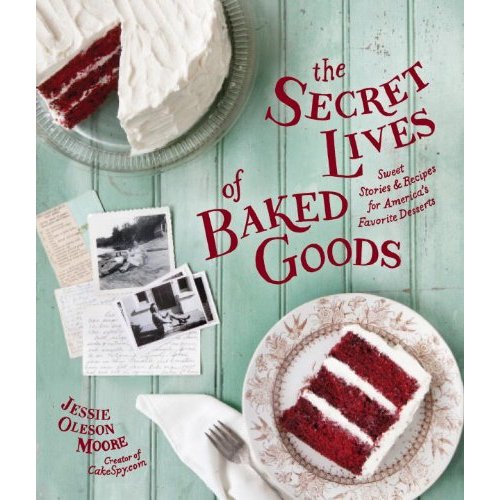 May-July 2013: My second book comes out! The Secret Lives of Baked Goods: Sweet Stories & Recipes for America's Favorite Desserts! I go on book tour.
May-July 2013: My second book comes out! The Secret Lives of Baked Goods: Sweet Stories & Recipes for America's Favorite Desserts! I go on book tour.
Book tour, part one.
Book tour, part two.
Book tour, part three.
August 2013: CakeSpy turns six! I'm hoping to start on a new book project soon. Life is good.
Thank you for making it sweet. I couldn't have done it without you, readers!
- - -
GIVEAWAY ALERT!!!
To thank you for your years of readership, howsabout a giveaway? To thank you for your years of readership, I have decided to give away two copies each of both of my books: CakeSpy Presents Sweet Treats for a Sugar-Filled Life and The Secret Lives of Baked Goods: Sweet Stories & Recipes for America's Favorite Desserts. Since I'm feeling very giving, this giveaway is open to US and international entrants.
All you have to do? Tell me your favorite thing about CakeSpy (yes, it's self-serving!). It could be a recipe, an illustration, a product, a post, or one of my books...you name it! Leave it as a comment on this post (it may not show up right away as comment moderation is enabled) and I'll choose winners.
UPDATE! I Decided to extend the contest cos I'm having so much fun with the responses. You now have til MY birthday, August 26 (monday), 5pm PST!
Update on 2013-09-15 05:26 by Cakespy
UPDATE: THE WINNERS!
Congratulations to the fantastic and lovely winners! They have all been contacted and had books sent out. Thank you again to everyone who participated! Only first names are used to protect privacy.
CAKESPY PRESENTS:
Kristin from Pittsburgh! This is actually someone I had done a painting for years ago, so it was nice to catch up (via email!).
Caitlin from Marblehead, MA! Having discovered me via Serious Eats, she's been following CakeSpy for three years!
SECRET LIVES:
Madye from England! Sheesh, shipping a book here was pricey but so worth it to ship to a fan in Battenberg cake bliss.
Jill from Lebanon, New Jersey! Not pronounced like the country. It's like "le bannen". Happy to have a fan in my home state!




















